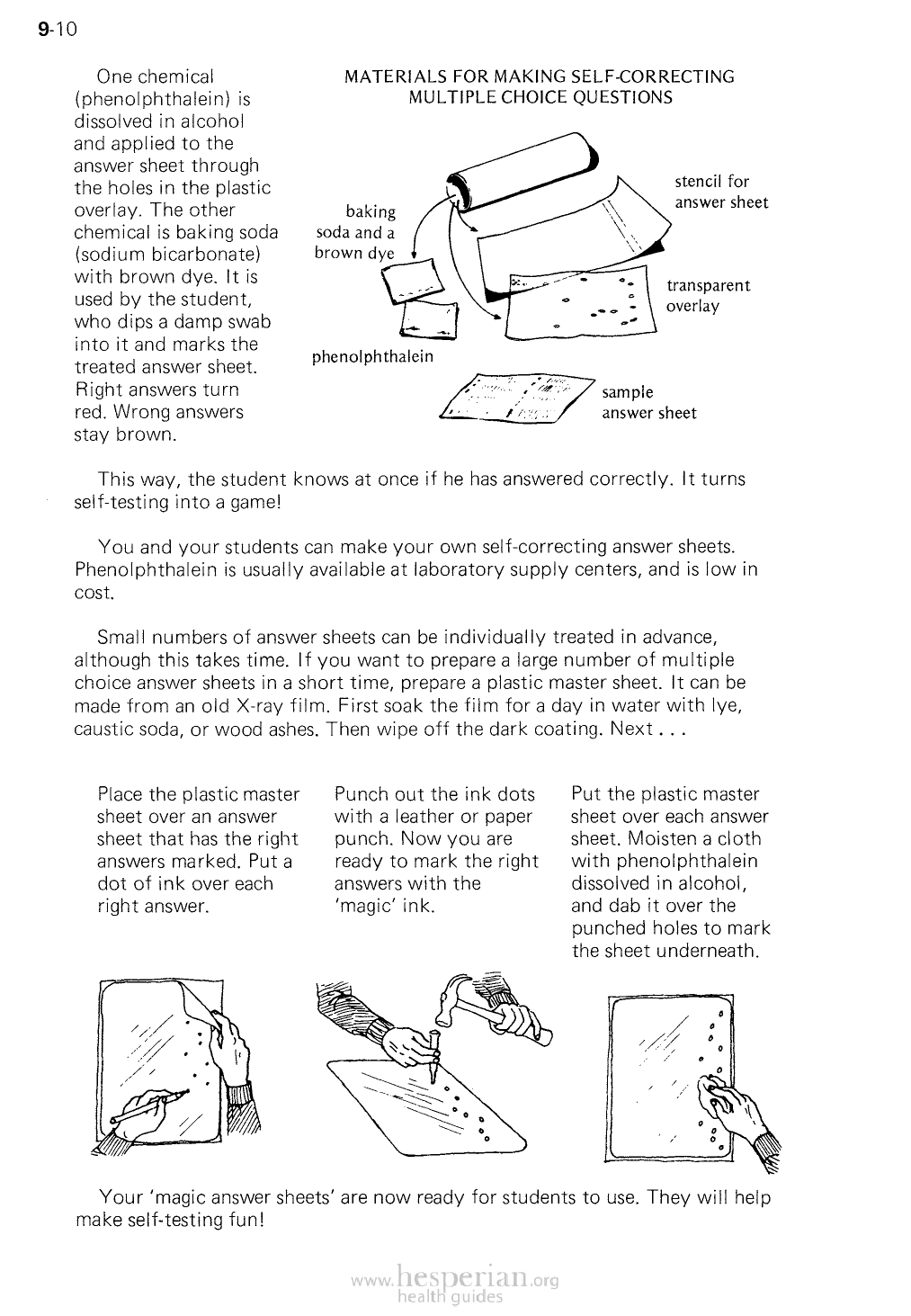
9-10
One chemical
(phenolphthalein) is
dissolved in alcohol
and applied to the
answer sheet through
the holes in the plastic
overlay. The other
chemical is baking soda
(sodium bicarbonate)
with brown dye. It is
used by the student,
who dips a damp swab
into it and marks the
treated answer sheet.
Right answers ‘urn red.
Wrong answers stay
brown.
MATERIALS FOR MAKING SELF-CORRECTING
MULTIPLE CHOICE QUESTIONS
baking
soda and a
brown dye
phenolphthalein
stencil for
answer sheet
transparent
overlay
sample
answer sheet
This way, the student knows at once if he has answered correctly. It turns self-
testing into a game!
You and your students can make your own self-correcting answer sheets.
Phenolphthalein is usually available at laboratory supply centers, and is low in
cost.
Small numbers of answer sheets can be individually treated in advance, although
this takes time. If you want to prepare a large number of multiple choice answer
sheets in a short time, prepare a plastic master sheet. It can be made from an old
X-ray film. First soak the film for a day in water with lye, caustic soda, or wood
ashes. Then wipe off the dark coating. Next . . .
Place the plastic master
sheet over an answer
sheet that has the right
answers marked. Put
a dot of ink over each
right answer.
Punch out the ink
dots with a leather or
paper punch. Now you
are ready to mark the
right answers with the
‘magic’ ink.
Put the plastic master
sheet over each answer
sheet. Moisten a cloth
with phenolphthalein
dissolved in alcohol, and
dab it over the punched
holes to mark the sheet
underneath.
Your ‘magic answer sheets’ are now ready for students to use. They will help
make self-testing fun!